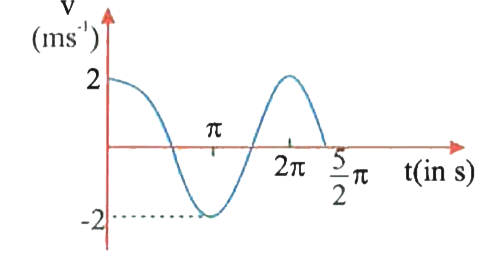Statement I : The principle of superpositions states that amplitudes , velocities , and , accelerations of the particles of the medium due to the simultaneous operation of two or more progressive simple harmonic waves are the vector sum of the separate amplitude , velocity and acceleration of those particles under the effect of each such wave acting alone in the medium
Statement II : Amplitudes , velocities and accelerations are linear functions of the displacement of the particle and its time derivates.
Statement I is true , Statement II is true , Statement II is a correct explanation for Statement I.
Statement I is true , Statement II is true , Statement II is NOT a correct explanation for Statement I.
Statement I is true , Statement II is false.
Statement I : is false , Statement II is true.
The correct Answer is:C
Principle of superposition holds true only when the vectors are linear functions of variable and its derivatives.
Topper's Solved these Questions
- BOOK - CENGAGE PHYSICSCHAPTER - SUPERPOSITION AND STANDING WAVESEXERCISE - Comprehension55videos
SUPERPOSITION AND STANDING WAVES
- BOOK - CENGAGE PHYSICSCHAPTER - SUPERPOSITION AND STANDING WAVESEXERCISE - Integer9videos
SUPERPOSITION AND STANDING WAVES
- BOOK - CENGAGE PHYSICSCHAPTER - SUPERPOSITION AND STANDING WAVESEXERCISE - Multiple26videos
SUPERPOSITION AND STANDING WAVES
- BOOK - CENGAGE PHYSICSCHAPTER - SOUND WAVES AND DOPPLER EFFECTEXERCISE - Integer16videos
SOUND WAVES AND DOPPLER EFFECT
- BOOK - CENGAGE PHYSICSCHAPTER - THERMODYNAMICSEXERCISE - 241videos
THERMODYNAMICS
Similar Questions
Knowledge Check
- Question 1 - Select One
A particle executing simple harmonic motion with an amplitude 5 cm and a time period 0.2 s. the velocity and acceleration of the particle when the displacement is 5 cm is
A0.5πms−1,0ms−2B0.5ms−1,−5π2ms−2C0ms−1,−5π2ms−2D0.5πms−1,−0.5π2ms−2 - Question 2 - Select One
The velocity-time graph of a particle executing SHM is as shown in the figure. The amplitude and maximum acceleration of the particle respectively are
 A0.5 m, 0.5 ms−2B2m, 2 ms−2C2m, 8π2ms−2D0.5 m, 4π2ms−2
A0.5 m, 0.5 ms−2B2m, 2 ms−2C2m, 8π2ms−2D0.5 m, 4π2ms−2 - Question 3 - Select One
A body is vibrating in simple harmonic motion with an amplitude of 0.06 m and frequency of 15 Hz . The velocity and acceleration of body is
A5.65m/sand5.32×102m/s2B6.82m/sand7.62×102m/s2C8.91m/sand8.21×102m/s2D9.82m/sand9.03×102m/s2
A particle is executing simple harmonic motion with an amplitude of 0.02 metre and frequency 50 Hz . The maximum acceleration of the particle is
View SolutionThe maximum particle velocity in a progressive wave is 4 times of the wave velocity. If the amplitude of the particle is 'A', then the wavelength of the wave is
View SolutionA particle is performing simple harmonic motion with amplitude A and angular velocity ω . The ratio of maximum velocity to maximum acceleration is
View SolutionFor a particle in S.H.M. if the amplitude of displacement is a and the amplitude of velocity is v the amplitude of acceleration is
View SolutionFor a sine wave passing through a medium, let y be the displacement of a particle, v be its velocity and a be its acceleration :-
View Solution

